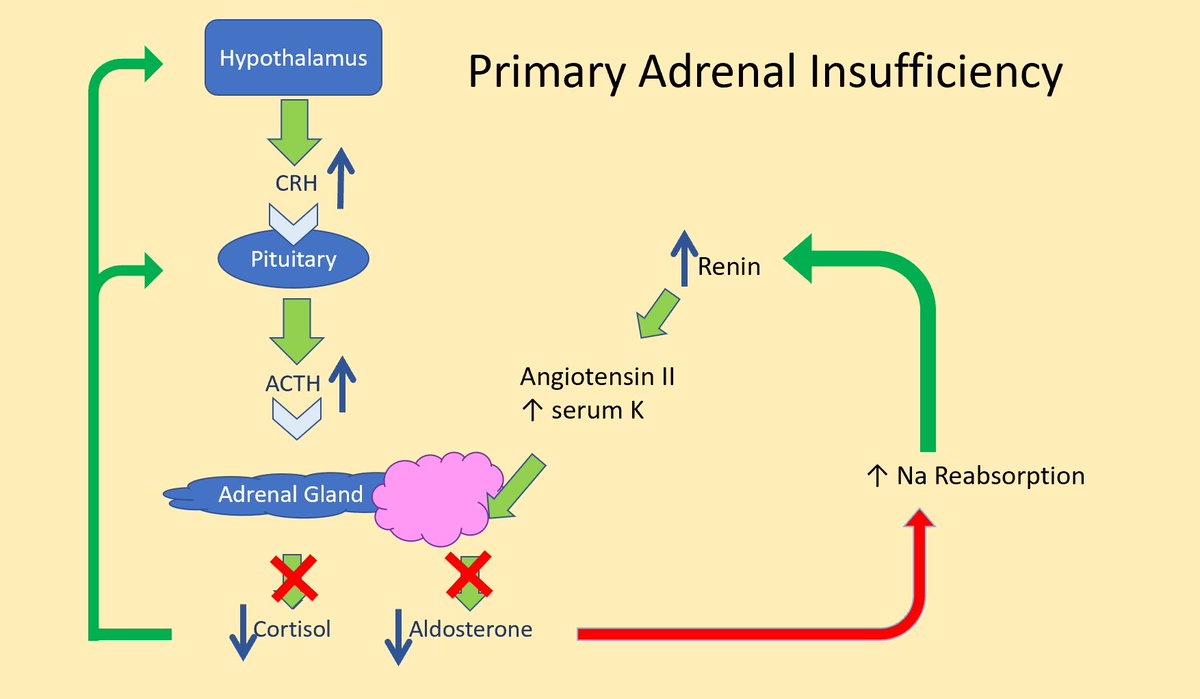#Infectiousdisease encyclopedia @Darcy_ID_doc carried us through another #HIV-focused #MTC at #Hillcrest this morning!!
Chief @photon_ick & PGY3 Dr. Sheila Bhavsar shared a cool case of #Toxoplasmosis, specifically #Toxo encephalitis!! Check out our 🗝️👇!!
Chief @photon_ick & PGY3 Dr. Sheila Bhavsar shared a cool case of #Toxoplasmosis, specifically #Toxo encephalitis!! Check out our 🗝️👇!!
1. Abrupt-onset weakness needs a stroke code evaluation. Our patient presented with #fevers & < 3 hr of L-sided #weakness!! ⏱️=🧠, so this comes first!!
2. Ultimately you'll end up with a #CT scan, where you are really looking for #bleeding or other space-occupying lesions.
2. Ultimately you'll end up with a #CT scan, where you are really looking for #bleeding or other space-occupying lesions.

3. Our patient had contrast-enhancing lesions. #contrastenhancement = edema & mass effect. No enhancement = not space-occupying! This helps narrow our differential! 

4. Now for a patient with a #CD4 < 200, CNS lesions have a very specific focal differential, which we can split into enhancing (CE) or not-enhancing (NE):
CE: Abscess, Toxoplasma, Primary CNS Lymphoma, Nocardia, Tuberculomas, Neurocysticercosis
NE: PML, HIV or CMV encephalitis
CE: Abscess, Toxoplasma, Primary CNS Lymphoma, Nocardia, Tuberculomas, Neurocysticercosis
NE: PML, HIV or CMV encephalitis

5. Now it's always possible for these patients to have another CNS lesion more typical of the #immunocompetent population... so it's important not to forget that! These just help us focus our differential for this particular set of risk factors!
6. If you suspect #Toxo, get a serum IgG! If it's (+), it's not super helpful (just means exposure), but if it's (-), the chance of Toxo #encephalitis is essentially nil! 

7. Finally, rather than jumping straight to a #brainbiopsy, if the diagnosis is uncertain, we'll often treat #Toxo empirically for 2 weeks and then reimage!
Improvement = continue with presumed diagnosis!
Stable findings/worsening = TE likelihood lower: move to brain biopsy
Improvement = continue with presumed diagnosis!
Stable findings/worsening = TE likelihood lower: move to brain biopsy

@LukewebsterMd @DirkGainesMD @daniellemunceMD @AlexCypro @ucsdpccm @SimerjotJ
#InternalMedicine #Owen #ID #Neurology #Stroke #MedTwitter #MedED #MedStudentTwitter
#InternalMedicine #Owen #ID #Neurology #Stroke #MedTwitter #MedED #MedStudentTwitter
• • •
Missing some Tweet in this thread? You can try to
force a refresh








